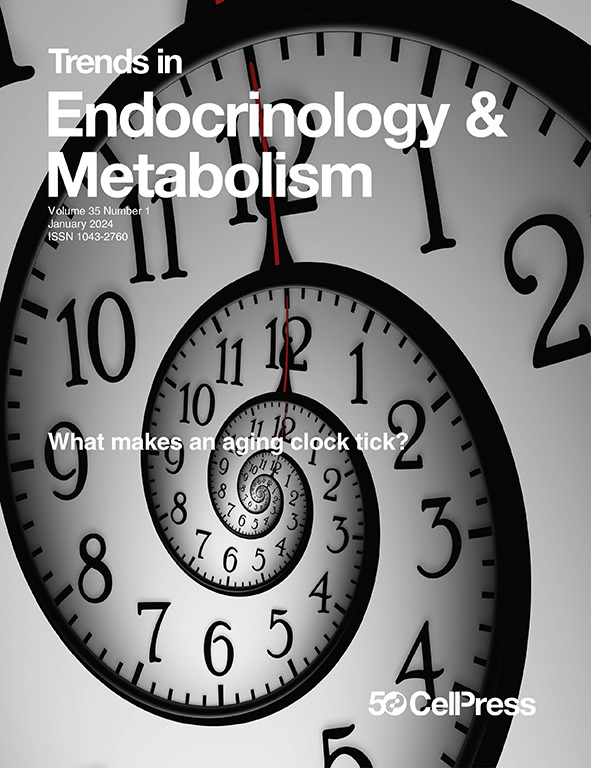狮身人面像有助于解答心脏再生之谜。
IF 11.4
1区 医学
Q1 ENDOCRINOLOGY & METABOLISM
Trends in Endocrinology and Metabolism
Pub Date : 2024-08-01
Epub Date: 2024-05-16
DOI:10.1016/j.tem.2024.05.003
引用次数: 0
摘要
心肌细胞(CM)死亡是导致全球心力衰竭的原因,而高效的CM再生仍是人们热切追求但尚未实现的目标。Ji 及其同事最近描述了一种通过协调 CM 和心脏成纤维细胞(CFs)中不同的鞘脂信号通路实现再生的新方法。这些发现揭示了新的生物学原理,并提供了有趣的转化机会。本文章由计算机程序翻译,如有差异,请以英文原文为准。
The sphinx helps to answer the riddle of cardiac regeneration.
Cardiomyocyte (CM) death drives heart failure worldwide, and efficient CM regeneration remains a fervently pursued but unachieved goal. Ji and colleagues recently described a novel approach to regeneration by orchestrating divergent sphingolipid signaling pathways in CMs and cardiac fibroblasts (CFs). The findings uncover new biology and offer interesting translational opportunities.
求助全文
通过发布文献求助,成功后即可免费获取论文全文。
去求助
来源期刊

Trends in Endocrinology and Metabolism
医学-内分泌学与代谢
CiteScore
20.10
自引率
0.00%
发文量
98
审稿时长
82 days
期刊介绍:
Trends in Endocrinology and Metabolism (TEM) stands as a premier Reviews journal in the realms of metabolism and endocrinology. Our commitment is reflected in the publication of refined, concise, and highly impactful articles that delve into cutting-edge topics, encompassing basic, translational, and clinical aspects. From state-of-the-art treatments for endocrine diseases to groundbreaking developments in molecular biology, TEM provides comprehensive coverage.
Explore recent advancements in diabetes, endocrine diseases, obesity, neuroendocrinology, immunometabolism, molecular and cellular biology, and a myriad of other areas through our journal.
TEM serves as an invaluable resource for researchers, clinicians, lecturers, teachers, and students. Each monthly issue is anchored by Reviews and Opinion articles, with Reviews meticulously chronicling recent and significant developments, often contributed by leading researchers in specific fields. Opinion articles foster debate and hypotheses. Our shorter pieces include Science & Society, shedding light on issues at the intersection of science, society, and policy; Spotlights, which focus on exciting recent developments in the literature, and single-point hypotheses as Forum articles. We wholeheartedly welcome and encourage responses to previously published TEM content in the form of Letters.
 求助内容:
求助内容: 应助结果提醒方式:
应助结果提醒方式:


